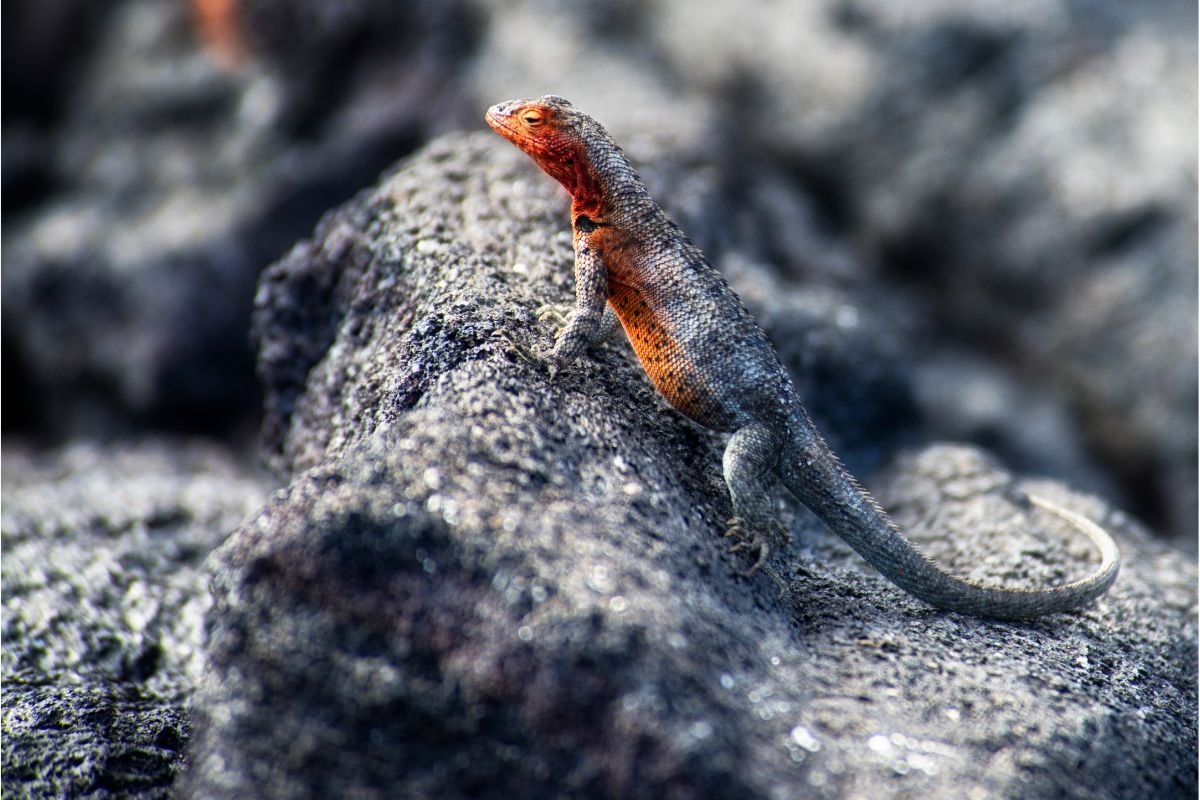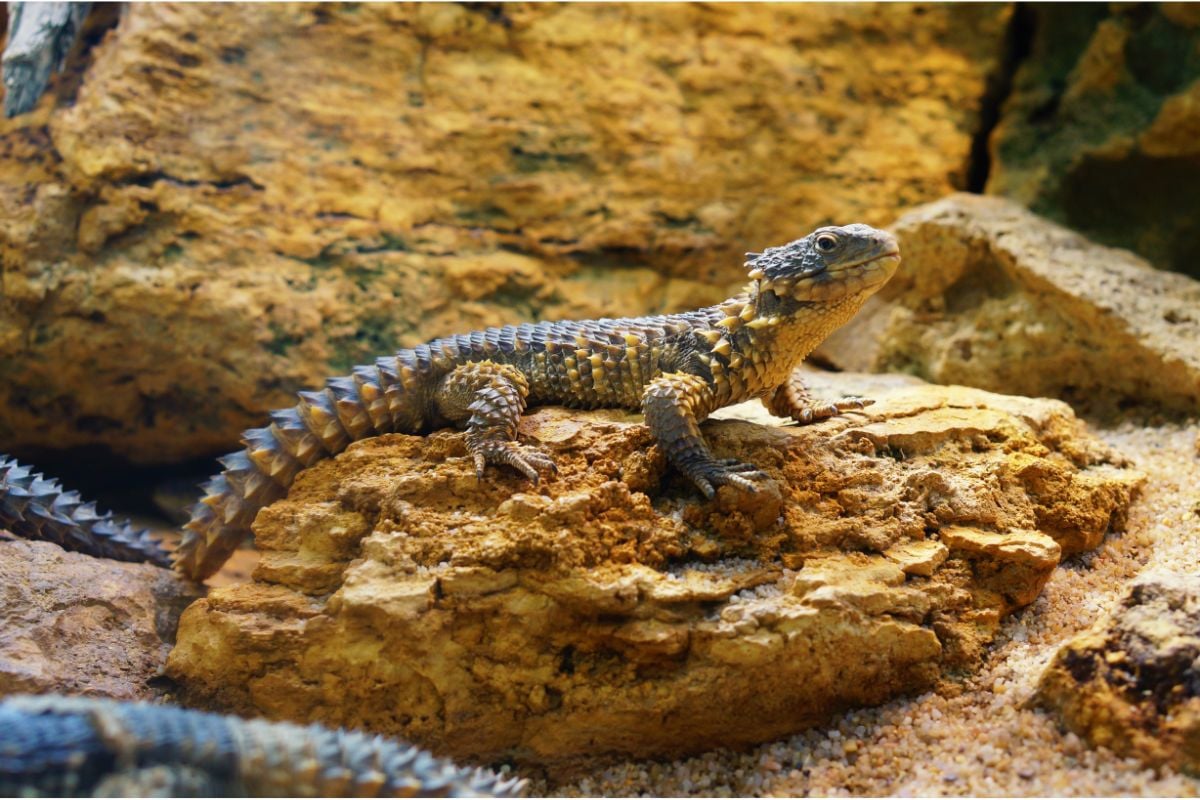Lizards are awesome pets to have. They often require minimal care and generally enjoy lazing around their enclosure. However, they still need to eat. So, what happens when you go away on a trip?
Many lizards can often go around 2 weeks without having anything to eat. When surviving in such hazardous climates in the desert, food is often scarce.

Although, after a while, they are certainly going to need something to keep them alive.
In this article, we discuss how long lizards can live with food, and without water, and whether it’s a good idea to not feed them for extended periods of time or not.
Can Lizards Live Without Water?
Like all animals of planet Earth, lizards cannot survive very long without water. They are used to drier climates, especially breaded dragons, however, they all need water to survive.
Lizards should not go without water for longer than a few days at a time. Although, it is best to always have water available for them to ensure their survival.
Many lizards will start to show signs of dehydration such as wrinkled skin, lack of appetite, an sunken eyes.
If your lizard is refusing to drink any water and is showing any signs of dehydration, you must take them to a vet for professional care.
Lizards can die quickly of dehydration, especially if they are house lizards and are not accustomed to the climate of the wild.
Can Lizards Live Without Food?
Typically, lizards of any size can live between 10 to 30 days without water. This is under the condition that they are remaining well-hydrated. However, without water, they will only live for around 3 days.
The size of the lizard is the most significant factor in how long it can last without food. A smaller gecko, for instance, might only last a week without food, whereas a larger iguana might last a month.
The larger the lizard, the larger the fat reserves, and the longer it can survive.
So, if you are going on a long trip make sure to leave your lizard with plenty of food and more than enough water to last.
Another option is to ask a friend or neighbor to drop by and top up the lizards water every few days.
Factors To Consider
Age And Size Of The Lizard
The length of time a lizard may survive without food is primarily determined by its age. Younger lizards lack the fat reserves that older lizards rely on to endure periods of time without meals.
Young lizards may perhaps only be able to fast for a few days before they begin to encounter health issues.
While adult lizards have developed the fat reserves required to survive weeks or even months without food. They still need to eat frequently but a few extra days without food will do them no harm.
Greater surface area-to-volume ratios are found in smaller lizards. They consequently lose heat more quickly than lizards of a bigger size.
Because of this, smaller lizards are more likely to perish from the cold if they can’t find food. This is why lizard enclosures are equipped with a heat lamp.
Larger lizards have a lower surface area to volume ratio and can keep themselves warmer for a longer period of time. This always them to survive longer without food as a source of energy.
The length of time a lizard can go without food depends on its age, size, and species. The environment is a further factor, though, and it is even more crucial.

Food, Substrate, And Temperature
While your lizard is going to need plenty of fresh, clean water, there are a few things that you need to know about your lizard’s food.
Lizards require a high-protein diet. This is often smaller insects such as flies, grasshoppers, and locust. It is best to provide your lizard with live food but frozen will work if you are in a pinch.
You also want to ensure they are getting a variety of foods for nutrients and vitamins.
As they eat you will notice that your lizard seeks the warm part of their enclosure. Lizards require a warm setting for proper meal digestion.
Their enclosure’s basking area should be between 85 and 95 degrees Fahrenheit. The temperature on the enclosure’s cool side should be between 75 and 80 degrees.
It’s crucial to provide your lizard with the appropriate substrate as well. You cover the bottom of their enclosure with this material.
Depending on the species of lizard you have, you need to utilize a specific sort of substrate. You should conduct a study to determine the ideal substrate for your particular lizard.
Nutrients
As mentioned above, lizards need a wide range of nutrients to keep them alive. As we know, lizards are cold-blooded animals that require the sun to keep their body temperature level.
So, they are most active during the day.
Because they are opportunistic feeders, lizards will consume any food that is put in front of them. They typically consume insects and other tiny invertebrates in the wild.
Some species of larger lizards may also consume small mammals, birds, and reptiles as part of their diet.
You have the ability to control their diet but you want to give them a large range of food courses including:
- Mealworms
- Crickets
- Wax Worms
- King Worms
They require a lot of vitamin D in their diet for bone strength and end up with fractures or deformities without it.
Takeaway
So, how long can lizards live without food? Given they are still being hydrated, lizards can live for around 10-30 days without food. Without water, they are not likely to last longer than a few days.
It is important to keep your lizard’s water supply fresh, clean, and full. They can dehydrate quickly.
So, when you are leaving your lizard alone for a while make sure to leave plenty of water and food. You should have a friend dropping by to top up their food and water supply!
- Can Leopard Geckos Eat Silkworms? - March 11, 2024
- Do Leopard Geckos Climb? - March 4, 2024
- Do Leopard Geckos Bask? The Answer Will Surprise You - February 21, 2024
